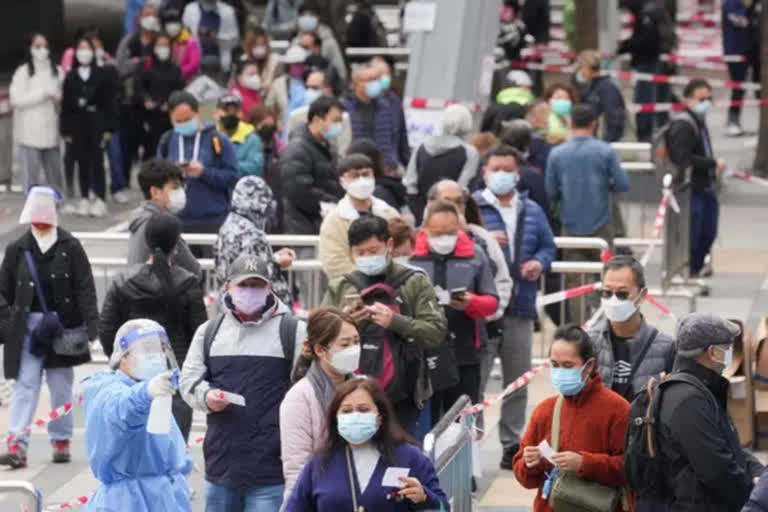Beijing: Two known Omicron sub-variants rather than any new variants have chiefly been responsible for the recent COVID-19 surge in China, according to a study of cases in Beijing published in The Lancet Journal. The analysis suggests Omicron sub-variants, BA.5.2 and BF.7 among the most dominant variants in Beijing during 2022 accounted for more than 90 per cent of local infections between November 14 and December 20, 2022.
The results represent a snapshot of the pandemic in China, due to the characteristics of Beijing's population and the circulation of highly transmissible COVID-19 strains there, the researchers said. China is widely reported to have ended its zero-Covid strategy on December 7, 2022. Since the lifting of these strict COVID-19 control policies which included targeted lockdowns, mass testing and quarantine surging case numbers have raised concerns that new variants could emerge.
In the three years since COVID-19 was declared a global pandemic, the emergence of variants such as Alpha, Beta, Gamma, Delta, and Omicron has caused multiple waves of cases around the world. Since December 2019, the study authors routinely collected respiratory samples from imported and local COVID-19 cases in Beijing, and randomly selected samples for analysis.
There had been no persistent local transmissions reported in Beijing before December 2022. The latest study analysed COVID-19 samples detected in Beijing in 2022. Genome sequences were generated using rapid, large-scale sequencing technology, and their evolutionary history and population dynamics analysed using existing high quality COVID-19 sequences.
Also read: Why COVID-19 kills more men than women decoded
From a total of 2,881 high quality sequences included in the study, 413 new samples were randomly selected and sequenced between November 14 when infections began to increase sharply and December 20, 2022. Of these, 350 were local cases and 63 were imported. Imported cases came from 63 countries and regions. Analysis of the 413 new sequences revealed they all belong to existing, known COVID-19 strains, the resaerchers said.
The dominant strain in Beijing after November 14, 2022 was BF.7, which accounted for 75.7 per cent of local infections. Another Omicron sub-variant, BA5.2, was responsible for 16.3 per cent of local cases, they said. "Our analysis suggests two known Omicron sub-variants rather than any new variants have chiefly been responsible for the current surge in Beijing, and likely China as a whole," said lead author Professor George Gao, of the Institute of Microbiology at the Chinese Academy of Sciences.
"However, with ongoing large-scale circulation of COVID-19 in China, it is important we continue to monitor the situation closely so that any new variants that might emerge are found as early as possible," Gao said. The authors acknowledge some limitations to their study. While only data in Beijing in 2022 was analysed, the authors say the data is representative of the country as a whole.
The number of laboratory-confirmed COVID-19 cases in December 2022 was unavailable because mandatory large-scale testing ended, suggesting the true number of infections is underestimated, leading to a degree of sampling bias in the dataset. "It is welcome to see this much-needed data from China," Professor Wolfgang Preiser and Tongai Maponga of the University of Stellenbosch, South Africa, who were not involved in the study, wrote in a linked Comment.
"It is certainly reassuring that this study yielded no evidence for novel variants but not a surprise: the surge is amply explained by the abrupt cessation of effective control measures," they said. However, the researchers urge caution in drawing conclusions about China as a whole based on data from Beijing. (PTI)



